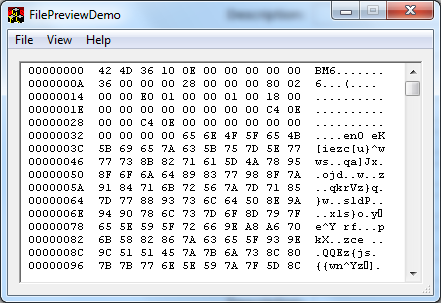


Hex to bi fraction converter code#
, each Record.Field(values, digits) * Number.Power(exp, dim - _)Īs you see in the code above, the base parameter is optional, so if not provided base 16 would be the default. Here is the fnHex2Dec function for Power Query: (input as text, optional base as number) as number => The other benefit of the below code is that it is not case sensitive (note to the digits step on the code below).

The code below converts numbers of any base when the base is smaller than 16 like Binary and Oct, so it is not limited to Hex values only. The benefits of his code is not limited to being non-recursive. I have touched his code a bit though, but it was more of a cosmetic change, so all credits of this blogpost goes to Rocco. So, I decided to share it with everyone so more people can leverage his nice Power Query function. A big shout out to Rocco Lupoi for sharing his code. A few weeks back one of my site visitors kindly shared his non-recursive version of Power Query function which beautifully does the job. In that blogpost I used a recursive Power Query function to convert Hex values to Dec values.
Hex to bi fraction converter how to#
These are above simple conversions binary number to hexadecimal number.A while ago I wrote a blogpost on how to use Unicode characters in Power BI. Since there is binary point here and fractional part. Therefore, Binary to hexadecimal is, = (1010101101001) 2Įxample-2 − Convert binary number 001100101.110111 into hexadecimal number. Since there is no binary point here and no fractional part. This is simple algorithm where you have to grouped binary number and replace their equivalent hexadecimal digit.Įxample-1 − Convert binary number 1010101101001 into hexadecimal number. So, these are following steps to convert a binary number into hexadecimal number.ĭivide the binary digits into groups of four (starting from right) for integer part and start from left for fraction part.Ĭonvert each group of four binary digits to one hexadecimal digit. Note that you can add any number of 0’s in leftmost bit (or in most significant bit) for integer part and add any number of 0’s in rightmost bit (or in least significant bit) for fraction part for completing the group of 4 bit, this does not change value of input binary number. That will be hexadecimal number of given number. So, if you make each group of 4 bit of binary input number, then replace each group of binary number from its equivalent hexadecimal digits. Since, there are only 16 digits (from 0 to 7 and A to F) in hexadecimal number system, so we can represent any digit of hexadecimal number system using only 4 bit as following below. However, there is also a direct method to convert a binary number into hexadecimal number − grouping which is explained as following below.

for the fractional part.Įxample − Convert binary number 1101010 into hexadecimal number. for the integer part and weight of the positions from left to right are as 16 -1, 16 -2, 16 -3and so on. That means weight of the positions from right to left are as 16 0, 16 1, 16 2, 16 3and so on. Since number numbers are type of positional number system. Then you need to convert it hexadecimal number. First, you need to convert a binary into other base system (e.g., into decimal, or into octal). You can convert using direct methods or indirect methods. There are various ways to convert a binary number into hexadecimal number. Hexadecimal number system provides convenient way of converting large binary numbers into more compact and smaller groups. Conversion from Binary to Hexadecimal number system Where A, B, C, D, E and F are single bit representations of decimal value 10, 11, 12, 13, 14 and 15 respectively. Whereas Hexadecimal number is one of the number systems which has value is 16 and it has only 16 symbols − 0, 1, 2, 3, 4, 5, 6, 7, 8, 9 and A, B, C, D, E, F. Since digital electronics have only these two states (either 0 or 1), so binary number is most preferred in modern computer engineer, networking and communication specialists, and other professionals. Binary is the simplest kind of number system that uses only two digits of 0 and 1 (i.e.


 0 kommentar(er)
0 kommentar(er)
